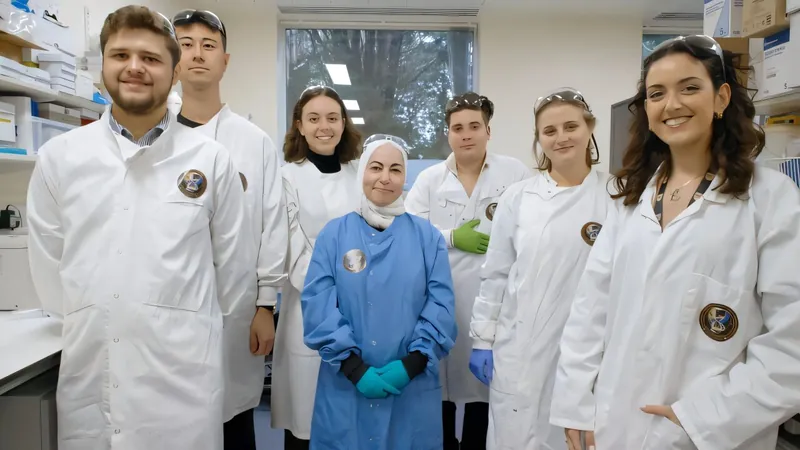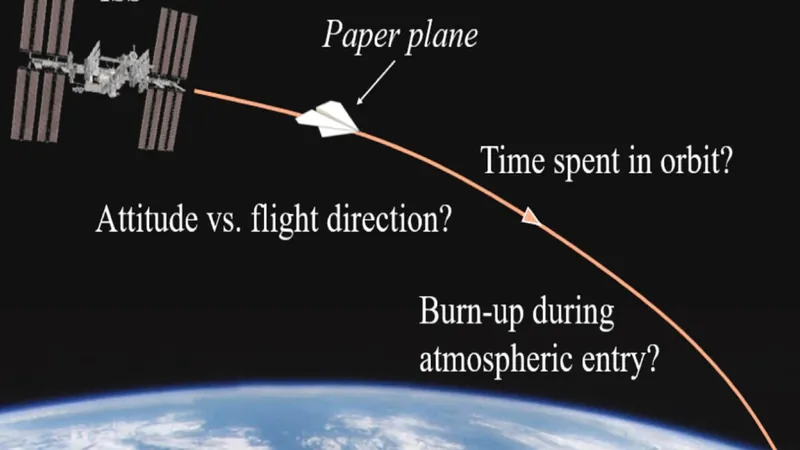
Groundbreaking Human Tissue Experiment Launched to Space Station: Aims to Unlock Secrets of Aging!
2024-11-05
Author: Liam
In a historic leap for science, the first-ever human tissue samples from the University of Oxford's Space Innovation Lab (SIL) have been sent on an extraordinary journey to the International Space Station (ISS). This innovative experiment will delve into the effects of microgravity on the human aging process, potentially transforming our understanding of health and longevity both in space and on Earth.
On Tuesday, November 5th (U.K. time), a team of dedicated researchers traveled to the Kennedy Space Center in Florida to prepare the precious tissue samples for launch. The samples were carefully packed into a specialized Science Cube, designed to fit within the ICE Cubes Facility aboard the ISS. This high-tech platform not only supplies power and data to the payload but also ensures real-time communication with scientists back in Oxford—allowing them to monitor and interact with the experiment as it unfolds in orbit.
Dr. Ghada Alsaleh, the leader of the Space Innovation Lab, expressed her enthusiasm about the project: "This moment is monumental for us—it’s not only about venturing into space but also about pushing the boundaries of scientific knowledge that could lead to healthier lives for many individuals, both on Earth and in the cosmos." She emphasized the experiment's aim to explore how aging operates under microgravity conditions and to accelerate studies on aging processes that are traditionally observed over decades on our planet.
The implications of this research could be profound. By advancing our understanding of age-related diseases through experiments conducted in the unique environment of the ISS, the team hopes to uncover insights that could improve the quality of life for countless people. “Our findings could ultimately reduce the burdens of aging not just for individuals but for their families and society at large,” Dr. Alsaleh added.
To achieve these ambitious goals, researchers at the SIL are leveraging state-of-the-art technologies such as organoids, 3D printing, and mechanical stress testing techniques. These groundbreaking tools will help scientists gain a deeper insight into the cellular mechanisms of aging, potentially unveiling pathways to combat age-related health challenges, regardless of whether one is on Earth or in space.
The Space Innovation Lab operates under the Botnar Institute of Musculoskeletal Sciences, part of Oxford’s renowned Nuffield Department of Orthopedics, Rheumatology and Musculoskeletal Sciences (NDORMS). Professor Jonathan Rees, head of NDORMS, highlighted the significance of this work: “This pioneering research project showcases the collaborative essence of modern science. The partnerships between Oxford, space agencies, and industry have made it feasible for researchers to observe and control experiments from space in real-time, revolutionizing the efficiency of cutting-edge research.”
Stay tuned for updates as this thrilling research unfolds! What discoveries await us in the realm of aging and space? The answer could reshape the future of health and well-being on our planet!









 Brasil (PT)
Brasil (PT)
 Canada (EN)
Canada (EN)
 Chile (ES)
Chile (ES)
 Česko (CS)
Česko (CS)
 대한민국 (KO)
대한민국 (KO)
 España (ES)
España (ES)
 France (FR)
France (FR)
 Hong Kong (EN)
Hong Kong (EN)
 Italia (IT)
Italia (IT)
 日本 (JA)
日本 (JA)
 Magyarország (HU)
Magyarország (HU)
 Norge (NO)
Norge (NO)
 Polska (PL)
Polska (PL)
 Schweiz (DE)
Schweiz (DE)
 Singapore (EN)
Singapore (EN)
 Sverige (SV)
Sverige (SV)
 Suomi (FI)
Suomi (FI)
 Türkiye (TR)
Türkiye (TR)
 الإمارات العربية المتحدة (AR)
الإمارات العربية المتحدة (AR)